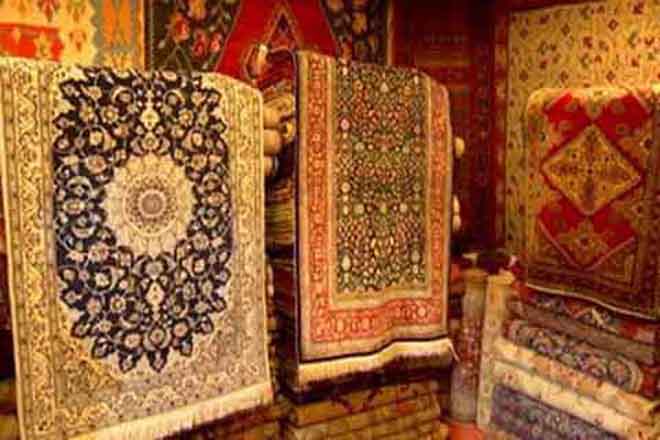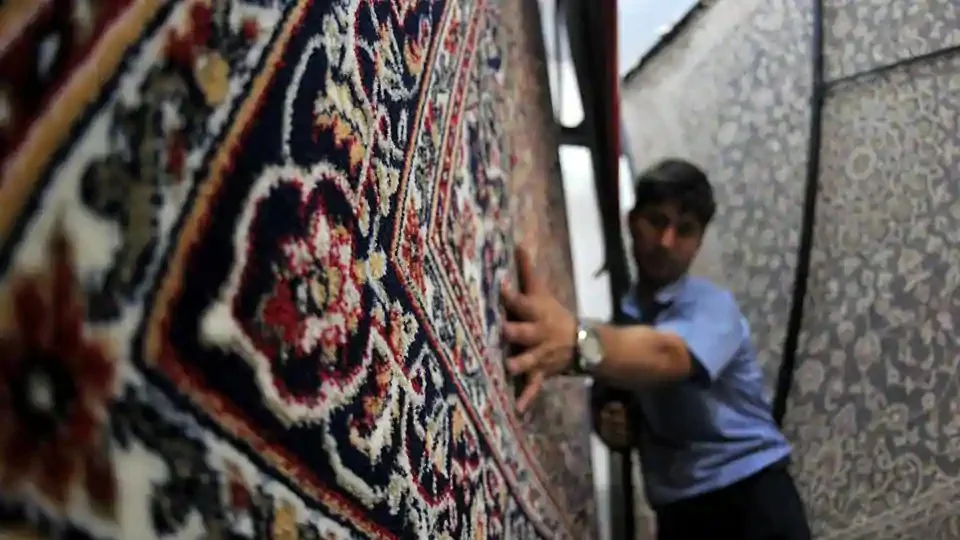
By Muzaffar Bhat
KASHMIR is bestowed abundantly with natural beauty and resources galore. Besides this, it is globally renowned for its handicraft sector. Its handicraft sector comprises exquisitely designed products such as Kashmiri carpets, papier mache, pashmina shawls, wood carving etc. The origin of carpet weaving in Kashmir valley dates back to the 15th century A.D. when the great ruler of Kashmir, Sultan Zainul Aabideen popularly known as Budshah brought some prominent Persian craftsmen to the valley to impart vocational skills and training to the locals. Local artisans excelled and took the art sky high with their industriousness and proficiency. During the period of Budshah’s regime, the art of carpet weaving flourished. He was a great supporter and true lover of arts and crafts.
Kashmiri carpets have gained international fame and carved a niche for themselves because of their beauty, strength and durability. They are uniquely woven by hand, unmatched and hand knotted, unlike the commonly available tufted carpets. Handmade and hand knotted carpets have an impressive longevity because its durability comes from delicate and intricate knots by hand. Thus, these find patrons in national and international markets because of the indelible impression they leave on the beholder. The craft coupled with tourism, and adventure tourism are one of the greatest sources of revenue generation for the valley. It provides livelihood to thousands of individuals associated with it. It also acts as a source of auxiliary livelihood and income for farmers in the bleak winters which renders agriculture unsustainable.
The craft has been through many ups and downs, but it has always been insulated due to the patronage of its aficionados. None have shown a greater appreciation for the art than Emperor Jahangir himself who promoted the carpets of Kashmir valley. People associated with this industry were held in high regard. The position of the artisans in the societal hierarchy was such that they were able to command great proposals for marriage and even turn down Government jobs because the craft was far more lucrative. Such was the esteem accorded to them. During the mid 18th century, Kashmiri carpets of the Mughal era were on display at the Crystal Palace Exhibition in London. The Europeans loved the intricacy of the design, and were awed by the iridescence of the many hues of these carpets. These luxurious products were, and continue to be widely popular even in the Indian markets among discerning buyers of class. Hand woven Kashmiri carpets are among one of the most luxurious offerings from India to the world. These carpets are a wonder of artistry and skill. The art produced by the nimble fingers of designers and weavers leaves customers and onlookers alike mesmerized.
Some decades ago, the city of Srinagar was the hub of the carpet weaving industry. One could see a carpet loom in every second home in the city. This craft has reached from the city to far off villages, hilly areas all over Kashmir. The carpet weaving industry witnessed a huge expansion in Northern Kashmir. There was a rapid proliferation in the rural belt of Baramulla, Bandipora and Kupwara. In the 80s and 90s, most of the households in rural areas showcased a festive look. Big and small carpet looms could be found in these houses. The weavers would keep a tape recorder on the window sill of their work room, from which old Hindi or Kashmiri music boomed. The instructor read the Talim sheets written in a secret coded language by the designer called naqash.

That was an era of prosperity for designers, weavers, traders, exporters and all parties associated with the craft. However, the centuries old carpet industry of our valley is slowly dwindling. One can hardly see a carpet loom in the entire Srinagar city, which was once the flourishing epicenter of the carpet weaving industry. We are losing this art swiftly as we are unable to lure the younger generation. They find the wages inadequate in order to even meet daily expenses. The weavers are unwilling to work as they think it is a brazen exploitation when they are being paid meagre wages for their talent, skill and hard work. This once refined and revered industry is sadly on the trajectory to massive decline.
According to the Economic Survey of Jammu and Kashmir, carpet exports amounted to 86 million dollars in 2011-12 as opposed to the dismal dipping from 2016 onwards. The export value tumbled to 56 million dollars during 2016-17. Meanwhile, Iran has recorded carpet export value of 275 million dollars in the same period. One of the reasons, according to prominent exporters is that our designs are struggling to hold their own amidst Iranian and Turkish counterparts globally. Another reason for the decline could be usage of sub optimal supplies and raw material. Manufacturers are preferring low quality silk in order to cut back on production costs. This has proven to be a stumbling block in the progress of the art.
Motivating the weavers to continue working hard and produce quality goods would go a long way in doing so. In order to motivate the disenchanted weavers, special incentives must be introduced in acknowledgement of their perseverance and skills. Beauty and luxury should not come at the cost of the health and welfare of human beings. Adequate compensation should be provided along with fair pay for workers’ health care in order to encourage them and the future generations to continue the family profession. The best performing weavers should be appreciated and rewarded at the local, and national levels. Market exhibitions should be undertaken to facilitate direct contact between the buyer and the seller to revive this industry.
A huge roadblock is the rampant and flagrant exploitation of the labourers and small-time business owners by the huge conglomerates and exporters. The main reason for decline in the industry is that weavers are deprived of fair pay, and manufacturers are unable to sell at fair price due to cheating by exporters and retailers. The exporters and retailers sell these carpets in domestic and international markets at exorbitant prices. They fail to pay the suppliers on time, affecting the payment of wages to the artisans who get demotivated and left in the lurch. Most of the exporters buy from suppliers at relatively low prices with the promise of timely repayment. However, the supplier’s attempts to get his dues are always thwarted by the high handedness of the exporters. “Saab busy hain/Saab meeting main hain” is a common refrain heard by the suppliers.
Another reason is the flooding of markets with machine made carpets that are misusing the goodwill and brand name of Kashmiri carpets. People inadvertently pay very high rates for inferior quality products. And when the product does not last for a long time or is defective, this damages the reputation of the earnest Kashmiri handmade, hand knotted carpet industry. Thus, the industry is taking a hit.
Furthermore there are several legacy conglomerates who have now turned their backs on the Kashmiri carpet industry and the poor but hardworking artisans. It was their utmost responsibility to save the industry but they have abandoned the industry and artisans in favour of their personal greed and wealth gathering prerogatives. One way for these conglomerates to step up and do their duty would be to collaborate with statutory bodies and create a corpus fund for the welfare of the artisans who work day and night, who have formed the backbone of their wealth and legacy.
The Government needs to act swiftly and seriously in order to take proactive rejuvenation measures and enact strong regulatory mechanisms to curb the exploitation of artisans and small businesses. We need to work together, the exporters, manufacturers, small and big business owners and all associated players alongside the Government in order to save our dying carpet industry before it is confined to only coffee table books, and museums.
- The author runs a business of handmade and hand knotted Kashmiri carpets
Follow this link to join our WhatsApp group: Join Now
Be Part of Quality Journalism |
Quality journalism takes a lot of time, money and hard work to produce and despite all the hardships we still do it. Our reporters and editors are working overtime in Kashmir and beyond to cover what you care about, break big stories, and expose injustices that can change lives. Today more people are reading Kashmir Observer than ever, but only a handful are paying while advertising revenues are falling fast. |
| ACT NOW |
| MONTHLY | Rs 100 | |
| YEARLY | Rs 1000 | |
| LIFETIME | Rs 10000 | |











